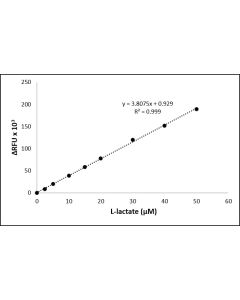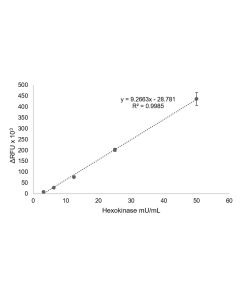

How Do You Assess Your Cell's Health and Metabolic Activity?
Researchers often face challenges in accurately assessing cell health and metabolic activity due to limitations in traditional assay methods. Common problems include high background interference, low sensitivity, and time-consuming procedures. Serum in growth medium can increase background signal in cytotoxicity assays, reducing accuracy. Our featured assay kits address these issues by offering higher sensitivity, reduced background interference, and streamlined protocols.
The LDH Cytotoxicity Assay Kit minimizes background interference by recommending the use of minimal serum or the subtraction of the signal from medium-only controls. The Hexokinase Activity Assay Kit tackles background signals by suggesting a control sample without the substrate. The L-Lactate Assay Kit provides a linear response even at low concentrations of L-lactate, with a detection limit as low as 1 µM.
These kits offer robust solutions for scientists investigating cell health, metabolic activity, and enzyme function.
Hexokinase initiates the metabolism of glucose. The activity of HK is crucial in glucose metabolism and can be indicative of cellular health, with increased HK activity being associated with some cancers. The Hexokinase Assay (Cat. No. 8408) allows the measurement of HK activity in cell and tissue samples. This assay uses a process where glucose-6-phosphate is further converted, ultimately leading to the formation of a colored product that can be measured at 490 nm, thus reflecting the HK activity.
In Hexokinase Activity Assay Kit-Fluorometric (Cat. No. 8798) glucose is converted to glucose-6-phosphate by HK, the glucose-6phosphate is oxidized by glucose-6-phosphate dehydrogenase to form NADPH.
Use: This kit measures lactate dehydrogenase (LDH), a cytosolic enzyme released upon cell death due to plasma membrane damage. The amount of LDH released into the culture medium is directly proportional to the number of lysed cells.
How it works: The assay uses a reaction cocktail that includes lactate, NAD⁺, diaphorase, and resazurin. LDH catalyzes the conversion of NAD⁺ to NADH. Diaphorase then uses NADH to reduce resazurin to resorufin, which is detected via fluorescence. Fluorescence is measured with an excitation wavelength of 560 nm and an emission wavelength of 590 nm.
Applications: Useful for assessing cytotoxicity induced by chemical compounds and evaluating cell-mediated cytotoxicity.
It is compatible with mammalian cell types, including 3D cell models, and various sample types, including serum, plasma, and cell lysates.
Colorimetric: LDH Cytotoxicity Assay (Cat. No. 8078)
Use: L-Lactate Assay- Fluorescence (LAC-FL) kits can precisely & accurately measure the lactate level of samples from cells, serum, plasma, cell culture media, and tissue extracts.
How it works: The fluorescence intensity is proportional to the lactate concentration and is measured at an excitation wavelength of 560 nm and an emission wavelength of 590 nm. The assay has a linear response up to 50 µM L-lactate, with a detection limit of 1 µM.
Applications: Suitable for measuring lactate levels in samples from cells, serum, plasma, cell culture media, and tissue extracts. Monitoring lactate levels can indicate the balance between tissue oxygen demand and utilization.
Colorimetric: L-Lactate Assay (Cat. No. 8308)
Use: Hexokinase Activity Assay Kit-Fluorometric (HK-FL) can be accurately used for rapid and sensitive measurement of HK activity in variety of samples such as cells and tissues.
How it works: The fluorescence intensity is proportional to the activity of hexokinase in the sample and is measured at an excitation wavelength of 560 nm and an emission wavelength of 590 nm. The assay has a linear response up to 50 mU/mL, with a detection limit of 0.8 mU/mL.
In this assay, glucose is converted to glucose-6-phosphate by HK, and then glucose-6-phosphate is oxidized by glucose-6-phosphate dehydrogenase to form NADPH. The generated NADPH reduces a probe, producing a highly fluorescent product.
Applications: Useful for measuring HK activity in cells and tissues. Increased HK activity is associated with cancer and metastasis.
Colorimetric: Hexokinase Assay (Cat. No. 8408)


